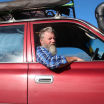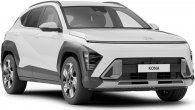By the early part of this century, it was painfully obvious that nobody was going to survive selling or making cars here if they didn’t have an SUV in their showrooms.
Ford took the step of designing and building the Territory here, but Holden’s first attempt was the neither fish-nor-fowl Adventra.
But instead of having a post-Adventra crack at another local SUV, Holden simply dipped into the General Motor’s-owned Daewoo grab-bag and came up with this, the South Korean-built Captiva.
Not that buyers were worried, and the Captiva sold rather well, beginning in 2006, and getting a facelift for 2012. By 2018, it was missing from Holden price-lists.
But time and kilometres have revealed that just because a car has a Holden badge, doesn’t necessarily mean it’s Holden-tough.
Models
How many seats you need will be the big test here as the Captiva was a medium-size SUV wagon which was available with five or seven seats.
From there, it gets pretty complicated, so make sure you know exactly what Captiva you’re looking at in the dealer’s yard, to make sure you don’t pay an all-wheel drive price for a front-wheel drive vehicle.
Use this information as a broad guide and assess each individual car on its own merits.
Along the way there were a variety of steps on the price list, so the Captiva covered a range of budgets.
The very first batch of Captivas arrived with an Australian-made V6 petrol engine and all-wheel drive.
But by 2007, Holden had expanded on that to include the then-sexy option of a turbo-diesel which could also be had as a front-wheel drive to save a few dollars.
Trim levels started with the SX, CX and LX models and there was also a top-of-the-range Maxx model which was actually based on a slightly different vehicle and was a little shorter overall but had similar interior dimensions.
In late 2009, Holden moved to simplify the range and instituted the Captiva 5 and Captiva 7 (named for their seating capacities) but stuck with the SX, CX and LX tags.
.jpg)
How was that simpler? Well, the Captiva 5 became a petrol four-cylinder only model, while the Captiva 7 could be had with the turbo-diesel or petrol V6.
March 2011 saw a facelift and 'Series 2' badge with squarer styling and a revised cabin, while the Captiva 5 could now be had with the four-cylinder petrol front-drive or the turbo-diesel and all-wheel drive, making things as complex as they had ever been.
But the Series 2 also bought a new V6 petrol engine, a smaller 3.0-litre unit shared with Aussie Commodores as well as a new flagship badge, the LTZ
The final fiddle came in 2015 when Holden changed tack again, offering just a single model with the trim level determining the rest.
So, a Captiva LS was a five-seater with the option of seven seats while the LT and LTZ got seven seats as standard.
The petrol four-cylinder was standard on the LS and the V6 was standard on the LT and LTZ. The turbo-diesel could be optioned on either.
All-wheel drive was reserved for the upper-spec LT and LTZ models.
Got all that?
The point is that you really need to make sure a particular car has the options and driveline you want.
And because there were so many permutations and spec changes along the way, each car needs to be taken on its own merits.
All Captivas over the years have featured standard equipment that included alloy wheels, MP3 compatibility, cruise-control, remote central locking, power windows and mirrors and an immobiliser.
.jpg)
The later the build-date the better the level of standard equipment will be, and later, high-spec Captivas had decent stereos, lots of electrical gear and leather seats.
That could include anything from a GPS navigation system (sat nav), Bluetooth connectivity, keyless entry, and a touch screen. Apple CarPlay was standard on later models, so don’t take the seller’s word for it that it’s fitted.
Some Captivas were optioned with a sunroof, a DVD player with screens for the back seat, while additions like air conditioning and a CD player and radio were standard in all versions.
Because the Captiva was largely a private-buyer model (not a fleet model) owners tended to add accessories.
Sweeteners at the dealership often included floor mats and (for a while) side steps (of questionable value) while plenty of owners added nudge bars, alloy rims and other features that don’t actually add much (if anything) to the resale value.
But the Captiva was never seen as sporty, so don’t bother looking for one with a rear spoiler or body kit.
What you might find, however, is a Captiva from a regional area which may have a bull bar and a light bar, although the space saver spare tyre turned off a lot of country buyers.
Cabin
You won’t immediately pick the Captiva’s interior as a Holden, but it is pretty generic stuff with the usual plastics and the odd splash of chrome here and there.
There are enough cupholders and air vents to keep everybody happy but the Captiva suffers from the one thing that afflicts a lot of these vehicles.
When you have all seven seats occupied, there’s precious little boot space in the back despite the Captiva having similar internal dimensions to its comparably sized competitors (which share the same problem).
It’s no accident you see a lot of SUVs in the school holidays towing trailers to increase their luggage capacity. Roof racks (and the Captiva features roof rails as standard) are another way around this problem.
The seven-seat version rules out a cargo barrier or luggage cover, but you might find a five-seater with such features.
While practical enough in its layout, the Captiva could be a bit noisy on coarse-chip roads.
.jpg)
Engines
The Captiva presented buyers with the classic diesel versus petrol dilemma.
The only engine available on the very first Captivas was a 3.2-litre V6 petrol engine which made 169kW of power and 297Nm of torque.
It was smooth in normal use but could get a bit raucous if you revved it out which, with a full load of bodies and luggage on board, was sometimes necessary.
The 2.0-litre turbo diesel in the first model made 110kW and a beefy 320Nm and, unlike the V6, could also be had with a five-speed manual option, although you’ll be doing well to find one.
Despite the lack of engine size, the motor used a turbocharger to boost power and a diesel particulate filter to reduce emissions.
In any case, the automatic transmission worked very well with the way the turbo-diesel made its power, and the engine provided the sort of effortless oomph that made diesels so sexy back then.
Despite that, it had slightly less towing capacity (1700kg plays 2000kg) than the petrol version, but a tow-bar was still a popular accessory on a diesel Captiva.
The 2009 facelift – for the 2010 model year - brought with it a new entry-level engine, a 2.4-litre capacity petrol four-cylinder that was only available in front-drive.
With engine specs of 103kW and 220Nm, it was pretty breathless and didn’t like hills at all.

It’s very much the poor relation these days.
Other variants were available with a choice of AWD (4WD) or front-wheel drive. The latter will use a little less fuel.
The major facelift in 2011 saw the 3.2-litre V6 replaced by a slightly smaller, 3.0-litre unit with similar specifications that was also found in base-model Holden Commodores at the time.
Although smooth and technically more efficient, the smaller size meant the new V6 produced its power and torque (190kW/288Nm) very high in its rev range, so it needed to be worked hard all the time and full use made of the six-speed automatic transmission.
That wasn’t helped by the kerb weight of a V6 Captiva which was getting close to 1800kg.
And while the V6 was getting smaller, the turbo-diesel actually grew, to 2.2 litres, and in the process now made 135kW and a full 400Nm, making it the one to have, especially since its real-world fuel economy was actually very good.
That was helped by a fuel tank capacity of 65 litres, giving a decent range.
Driving
Compared with the SUVs the Captiva was selling against, the driving experience was nothing out of the ordinary.
Beyond that, the Captiva also paid the price for its ride height: The stiff springs that attempted to tame the body roll in any car with such a high centre of gravity also spoiled the ride quality on anything less than a perfect surface.
Low profile tyres on alloy rims didn’t help one bit.
The all-wheel drive models were also fairly heavy cars for their size, and that also had an effect on how they steered and cornered.
Fundamentally, there were more dynamic, more fun-to-drive alternatives from other makers.

In performance terms, the Captiva was a mixed bag.
The lower fuel consumption diesel (particularly the later, 2.2-litre one) had a very unruffled feel and was able to use its torque to great effect.
The four-cylinder petrol, meanwhile, was simply underdone and even though, on paper, the V6 had what it took, the reality was a bit different.
Even though it lacked the diesel fuel economy advantage, the V6 didn’t really make up for it in any major way, apart form a small performance advantage, yet 0-100km/h still took at least eight seconds.
The earlier 3.2-litre version wasn’t too bad, but the later 3.0-litre unit with its sky-high power and torque peaks needed to be flogged along to get decent performance.
And when you did that, your fuel mileage could take a real dive around the city and suburbs.
The automatic gearbox in the later V6 also seemed to sometimes lose the plot and either forget what gear it was in, or have trouble deciding on which gear to select next.
As for the optional all-wheel drive platform, well, don’t go looking for an off-road review.
With limited ground clearance (and Holden didn’t offer a lift kit) the Captiva’s all-wheel drive might be of use if you’re visiting the snowfields, but in terms of heading into the bush, forget it; the Captiva had zero off-road pretensions.
Safety
The Captiva wasn’t tested for a safety rating by ANCAP when brand-new, but it did undergo testing according to EuroNCAP standards.
The first-generation Captiva scored four stars, while the post 2011 models scored the maximum five stars.
In ANCAP’s local used-car assessments, the same models scored three and four stars respectively.
All Captivas got front and side airbags and most of them also had side-curtain airbags covering the third row of seats.
The exception to that was the very early (pre-2007) base-model car (SX) which did without the curtain bags.
Traction-control and stability control were standard fitments from day one, but if you want electronic brake-force distribution, hill-decent control, brake-assist and roll-over control, you need to buy a Captiva with a build date after the 2011 face-lift.
High spec second-gen cars (LT and LTZ) got a standard reversing camera while parking sensors were standard on the LX from 2007.
All Captivas sold in Australia had ISOFIX child-restraint mounts.

Any common issues?
Sold at a time when diesel engines were the new black, a turbo-diesel Captiva carries the same caveats, issues, complaints, problems, common faults and reliability issues as any other make or model diesel with a soot filter fitted.
That surrounds the possibility of the filter never getting hot enough to clean itself and if that happens, you’re looking at big bills to replace the filter.
The turbo-diesel engine also required replacement of the toothed rubber timing belt at 90,000km, so be very wary of a diesel Captiva with 85,000km that seems like a steal.
The earlier 2.0-litre diesel was also prone to bearing failure in the rocker arms, a problem made worse by a lack of servicing.
Holden eventually even issued a recall to fix the affected vehicles.
The petrol V6 engine uses a timing chain rather than a belt, but these are prone to stretching, at which point they require replacement.
Given the east-west engine location in the Captiva, this is not an easy (nor, therefore, cheap) job.
The problem is more likely to crop up in cars that have suffered skipped oil changes, so a look at the service handbook will tell you a lot.
The first signs of a stretched timing chain might be a rattling noise from the top of the engine when it’s hot, or a `check-engine’ light on the dashboard as the computer becomes confused by the slack chain.
The V6 has also been accused of rough running and a poor idle and the industry fix is to fill the tank with premium ULP rather than the standard brew.
That will often fix the problem but adds considerably to the running-cost bottom line.

The other fix for the same problem is sometimes to replace the oxygen sensor.
Again, a bung sensor will often trigger a dashboard light but some Captivas have also taken it upon themselves to randomly switch on their `ECU’ light.
Some owners have reported replacing the on-board computer multiple times to try to fix this and other electrical problems, including a sudden loss of power which the trade reckons is a faulty connector in the wiring harness.
In that case the fix is simple; the connector which has acquired moisture needs to be dried out and re-sealed, but that’s only possible once the problem has been diagnosed.
Anybody who has replaced tyres on a Captiva may also have discovered that the vehicle seems very difficult to wheel-align correctly.
The wheel-alignment industry reckons the Holden is very hard to accurately set-up, but incorrect camber settings (in particular) will lead to accelerated tyre wear.
The Captiva doesn’t seem too prone to automatic transmission problems, apart from getting used to the sometimes patchy shift pattern that seems part and parcel of the vehicle.
All Captivas also fall under Holden’s lifetime capped price servicing regime which was announced a couple of years ago, so the ongoing service cost should be contained.
But you won’t find details in the owners manual (since the scheme is retrospective) and you’ll need to talk to a Holden dealer for the full details.

On the recall front, the Captiva has been recalled to check some diesel models for a variety of potential fuel line faults that could have created a leak as well as a batch of early cars from 2006 to check for a missing clip on the brake linkage.
Perhaps the most serious recall, though, was to check for a steering shaft that could become disconnected, leading to a total loss of steering control.
Check with a Holden dealer to see what recalls affect a particular car and whether they’ve been carried out.
MORE: If anything crops up, you’ll probably find it on our Holden Captiva problems page.
Verdict
Seven-seat option can't save it from ordinary dynamics and quality.
Holden Captiva 2006: CX (4X4)
| Engine Type | V6, 3.2L |
|---|---|
| Fuel Type | Unleaded Petrol |
| Fuel Efficiency | 11.5L/100km (combined) |
| Seating | 7 |
| Price From | $4,620 - $6,820 |
Pricing Guides



.jpg)











.png)








.jpg)


.jpg)



.jpg)

Comments